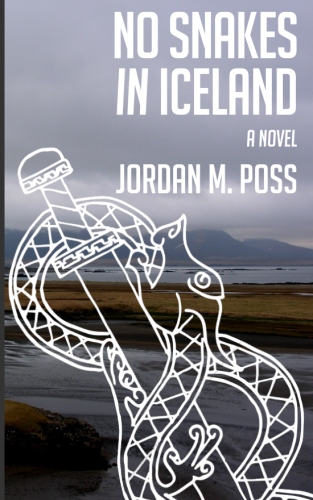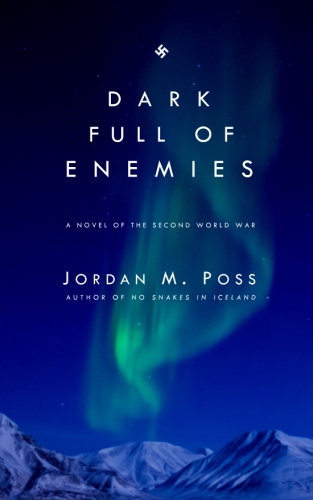Semmes: Rebel Raider
/CAPTAIN Raphael Semmes and his executive officer, John McIntosh Kell, aboard the CSS Alabama in Capetown, South Africa, August 1863
I’ve studied infantry combat a lot and while you can never grasp every subtopic in your field, I’ve grown keenly aware of one big weakness in my studies—naval history. I’m trying to fix that, and just last week I ran across John M. Taylor’s Semmes: Rebel Raider at my local used book store. This book, otherwise an impulse buy, suggested itself for three reasons: I’m interested in the Civil War, I’m belatedly trying to learn as much as I can about maritime military history, and I also passionately enjoy short biographies of the sort that Paul Johnson writes. They’re a demanding form, the sonnet to the full-length biography’s epic, and push their authors to, in the words of Herbert Butterfield, “search . . . for a general statement that shall in itself give the hint of its own underlying complexity.” Happily, Taylor’s Semmes proves excellent in all three regards.
Raphael Semmes (1809-77), unlike the names Lee, Jackson, or Stuart, is probably unfamiliar to anyone with a less than an enthusiastic interest in the Civil War. Indeed, in the last round of protests of Confederate monuments, Semmes didn’t possess the notoriety to inflame even today’s protesters: “Although the protest was supposed to happen around 5 p.m.,” a Mobile news outlet reported regarding the city’s Semmes statue last year, “it appears the group never showed up.”
That Semmes is relatively unknown is strange—he was the most successful commerce raider before the era of the submarine—but not inexplicable, traits that could apply to his entire life. Born in Maryland, he joined the US Navy as as midshipman at 17 and spent almost all of the next forty years in the service, first for the United States and then for the Confederacy. Though a practicing Catholic from the South, he married into a Protestant family from Ohio and relocated to Alabama, where he tried to pursue both his naval career and a law practice. (This is not as strange as it might sound; lots of pre-Civil War military officers had side gigs, some of them much shadier than lawyering.) One can see his expertise in the law stemming from his strictly observed Catholic faith and Southern code of honor as well as his naval experience. After losing one of his first commands, the USS Somers, to a storm during the Mexican War, Semmes asked for, received, and was exonerated by a military investigation. His expertise in maritime law would prove useful for him during the height of his career.
He served in and out of active duty in a variety of capacities—commanding naval artillery under General Winfield Scott in Mexico, a duty which acquainted him with Captain Robert E. Lee of Scott’s staff, commanding a store ship, working for the Lighthouse Service as both an inspector and Washington bureaucrat—until the secession crisis in 1860. An ardent secessionist, Semmes believed the Southern states lived under a tyranny crafted to benefit the industrial classes of the North and, especially, New England. When the Southern states began to secede following the election of Abraham Lincoln, Semmes resigned his commission and immediately accepted a position in the fledgling navy of the Confederate States of America.
After a variety of peacetime assignments (it is often forgotten that several months of peace separated the secession of the first seven Confederate states from the outbreak of war), Semmes was sent to New Orleans to take command of the CSS Sumter, a converted steam cruiser. When Semmes embarked from New Orleans in June 1861, it was the last time he would see the South for over three years.
Semmes immediately proved his mettle. He deftly escaped the Union blockade at the mouth of the Mississippi and began a rapid series of raids on northern merchant shipping. Semmes, suspicious as he was of the New England commercial class, was well-suited to the task, and captured eighteen American ships in six months. Without a friendly port to which to send captured ships, Semmes removed their crews, any useful cargo, and burned them. Of the eighteen he captured, only seven were sunk in this way, but he had sent a clear message and would have an outsize influence. Semmes’s raiding not only hurt the northern economy but also tied down valuable naval resources; “by the end of 1861 Semmes was being pursued by half a dozen vessels that otherwise would have been tightening the blockade of Southern ports (36).”
In serious need of repairs, Semmes brought the Sumter into port at Gibraltar in 1862 for refitting. There the Union navy caught up to him and kept watch for him to depart British waters. Eventually, with the Yankees too close and the estimated repairs to the Sumter too expensive, Semmes paid off his hired crew and he and his officers sailed to England, where they took command of the ship that would create his legend—the CSS Alabama.
“Was there ever such a lucky man as the Captain of the Alabama?”
In a cruise that lasted just under two years, Semmes and the Alabama ranged from the Azores to the Caribbean, rounded the Cape of Good Hope twice, crossed the equator four times, and sailed as far east as Vietnam, a voyage of 75,000 miles without a stop in a single Confederate port. Along the way he captured 64 northern merchant ships, burning 52, causing nearly $7 million dollars in damage to northern shipping. Throughout, despite pursuit by the US Navy, Semmes eluded his enemies through a skillful combination of cunning, local intelligence, daring, and—once in a while—luck. Think JEB Stuart crossed with Captain Blood.
The Alabama’s cruise ended at the Battle of Cherbourg in June 1864, when the USS Kearsarge threatened to box the Alabama in and Semmes offered single combat. The Kearsarge sent the Alabama to the bottom. Semmes and his officers, rescued by a British yacht, escaped to England. Though Semmes would later claim the Kearsarge had an unfair advantage in that it had primitive armor plating—chains draped along the sides of the hull near the engine—the Alabama was in bad repair, much of its powder was wet, its shells had defective fuses (a problem for Lee at Gettysburg as well), and, most importantly, it did not need to engage the Kearsarge.
Taylor makes this seemingly unnecessary engagement understandable, because he makes Semmes understandable. Chivalrous to a fault, Semmes took extraordinary care over the legality of his seizures and chafed at northern accusations that he was no more than a pirate. He lived by a strict code strongly inflected both by his Southern culture and his religion and held himself to a high standard. That the Yankees he captured did not confirmed his prejudices against the northern industrial and commercial classes. He was appalled to capture multiple northern vessels to find that their captains enjoyed the services of “stewardesses” or “chambermaids.” Their true function could not be clearer to Semmes. “These shameless Yankee skippers,” he wrote after one such capture, “make a common practice of converting their ships into brothels (77).”
“Old Beeswax”
Taylor’s attention to Semmes’s character and beliefs make this short book (the main body of the text is 110 pages) especially valuable. Semmes—a short, aloof man who waxed and twisted the ends of his mustache (his men called him “Old Beeswax”), who smacked his lips as he talked, who seemed to take no special notice of anything happening below the quarterdeck but always knew what was going on aboard his ship; a strict disciplinarian; a gentleman who took pains to reassure his prisoners that they would be treated well; a Catholic who kept a shrine in his quarters; a crafty, intelligent, and aggressive raider who nevertheless had a wry sense of humor—is as colorful and timeless a seafaring character as any invented by Sabatini, Stevenson, Conrad, CS Forester, or Patrick O’Brian.
But he is also a man of his era. He not only believed in the legality of secession but came to believe it necessary: the north had a Puritan-bred culture of alien moneygrubbers that was incompatible with the older traditions of the agrarian South. He was a 19th century culture warrior. Though he only ever owned a few personal servants, he favored the expansion of slavery to provide a bulwark against the north’s economic oppression. His wartime raiding was not only his military duty, it was an opportunity to stick it to the New Englanders he held ultimately responsible for the crisis. He did not soften these attitudes post-war, either: “Avoiding the false humility and the evenhanded praise of friend and foe that would mark later memoirs,” Taylor writes,
Semmes portay[ed] the war as a struggle between good and evil in which the South is on the side of the angels. He repeatedly compares the South’s struggle for independence with the English civil war two centuries earlier. He likens the South to the king’s Cavaliers, the North to the barbarous Roundheads. As for slavery, Semmes could not conceive of blacks’ prospering in a situation where they were left to their own devices (106-7).
Taylor lays all of this out clearly and succinctly. He also writes elegantly, relating the entire career of the Sumter and the Alabama without turning the central 70 pages of the book into a litany of names, dates, and naval jargon—a striking achievement. Some passages, such as the duel with the Kearsarge or Semmes’s several daring escapes from the Union navy, are even exciting.
It’s also witty and fun, finding ways to portray the human side—that is, the absurd and surprising sides—of the war. For instance, after overtaking the Ariel, a steamer owned by Cornelius Vanderbilt bound for Panama and, presumably, the gold fields of California, Semmes discovered that instead of a haul of gold and goods “he had on his hands a packet with some five hundred passengers, including a rather embarrassed company of U.S. Marines.” When Semmes finally bonded the Ariel and let her go, the female passengers gave him three cheers. Another time, Semmes captured a ship with a personal “stewardess”—“a category of passenger of which Semmes was quite disdainful”—to the captain aboard:
In the case of [the Yankee captain’s] companion Semmes’s attitude was fully reciprocated; she was so reluctant to board the Alabama that the Confederates had to tie her into a boatswain’s chair to transfer her to the raider. Once on the Alabama, however, the feisty Irish-woman, whose name is lost to history, marched up to Semmes and denounced him as a pirate! This was one charge for which Semmes would never stand still; when the woman refused to stop her tirade, Semmes ordered that she be doused with water—the only time he treated one of his female prisoners so roughly (73).
If there is one flaw in Semmes: Rebel Raider, it is that the introductory chapter on Semmes’s pre-war life and the final chapter on his post-war career are too short, too cursory. This is more a problem with the final chapter, which passes from the publication of Semmes’s memoirs in 1869 to his death in 1877 with no description of anything in between. But this is a minor problem and natural to the form, which must be selective, and there are full length biographies of Semmes—including one by Taylor—for these details.
And speaking of “natural to the form,” Semmes’s relative lack of fame—strange but not inexplicable, as I said at the start—is due to his line of work. As a captain in a small, weak navy whose ports were all blockaded, forced to operate for years at a time without a trip home, sailing aboard a British-built ship with a hodgepodge crew of Liverpudlians and other foreigners, and commanding a few hundred rather than thousands of men, Semmes “had no legion of postwar admirers” and had won his victories at sea in what “has been perceived as a land conflict,” leaving “no ‘Little Round Top’ or ‘clump of trees’ to mark them (vii-viii).”
Semmes: Rebel Raider is an excellent short introduction to the tiny Confederate navy, to the complexity of the Civil War political scene, to the ways in which global warfare could effect events in the United States and vice versa, and to one of the great maritime commanders who is less well known than many of his contemporaries in the infantry and cavalry.















